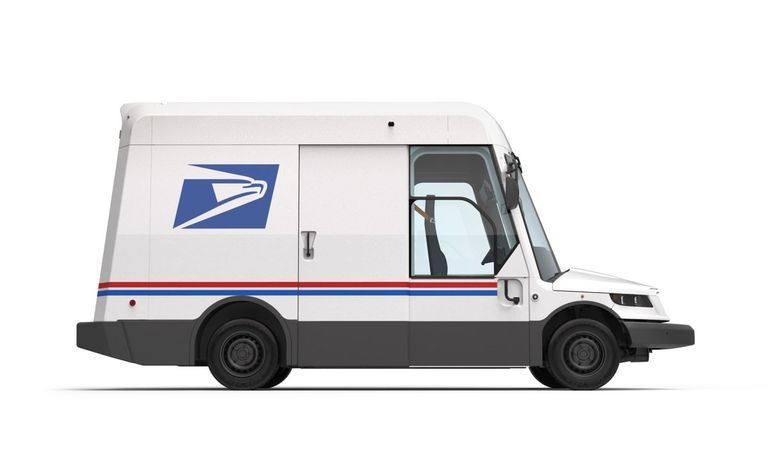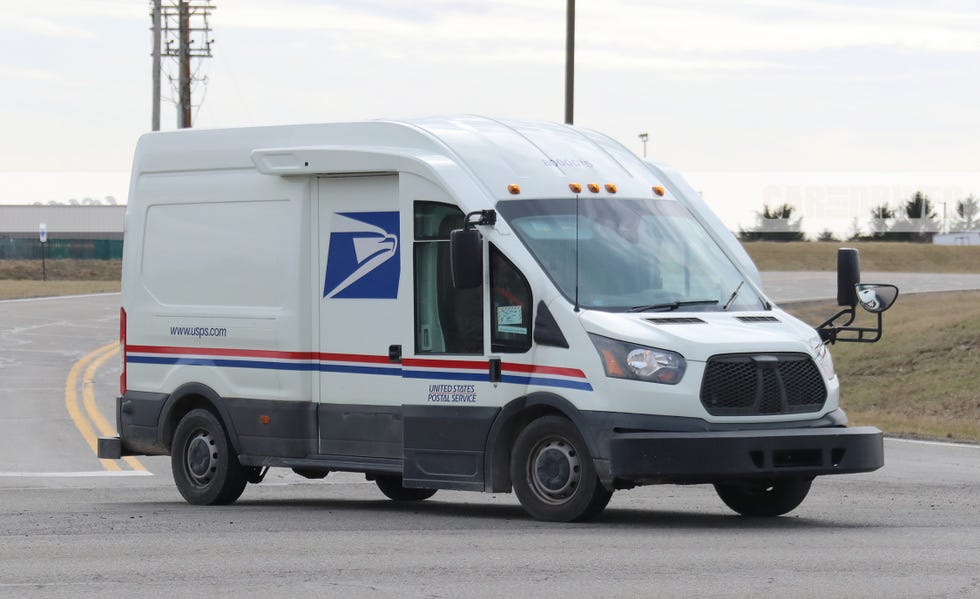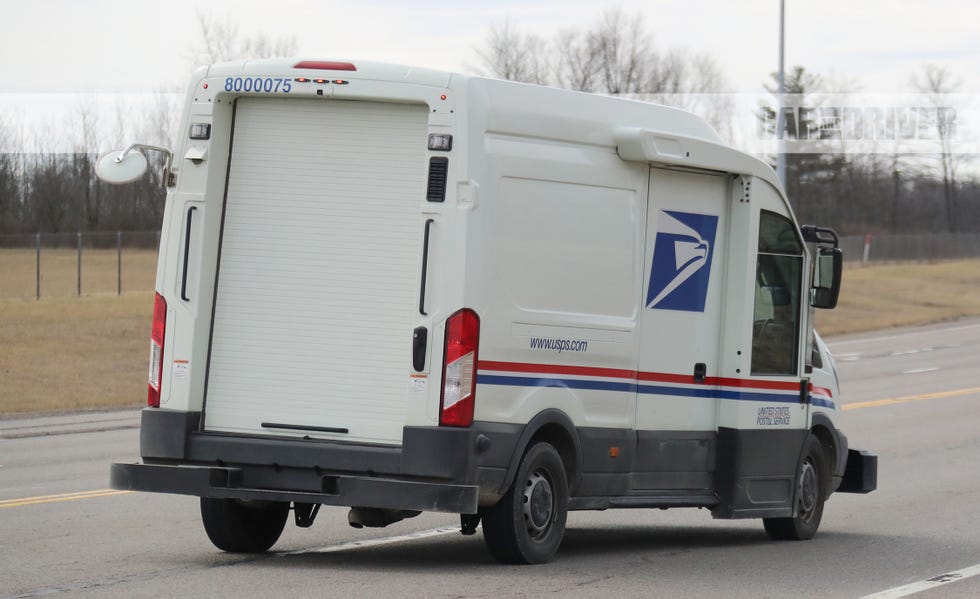
pheller
UltimaDork
2/25/21 10:37 a.m.

Somehow, Oshkosh (who also makes badass military vehicles) wins the USPS contract to produce the LLV replacement, despite not actually making a working prototype of the vehicle shown above. They were previously utilizing a Ford Transit as a demonstration vehicle. Oddly enough, the Next Generation Delivery Vehicle (NGDV) bares resemblance to the AM General and Karsan prototypes, but at least those were running/driving test vehicles.

One cool thing about the Oshkosh will be its ability to easily swap from gas to electric powertrain. A type of "modular" drivetrain design.
Oshkosh says it should have the mail delivery vehicle on the road in 2023.
morgan olson is a sister company. I've spent plenty of months there last year, so it was disappointing they werent the pick.
USPS has been working on the decision for years for which of the 5 prototype they pick, and they pick option 6. On one hand oshkosh is probably the most realistic for getting to production on time. on the other hand, government picks company they currently give billions of dollars to that wasnt really even in the running. Might as well give it to boeing if thats how you're going to play.
With the huge volume in back, these look like they'd make great camper vans. Too bad they'll likely be on death's door by the time they are surplus'd, like the LLVs are now.
I wonder how much it costs to replace that gigantic windshield.
Why do they have to be so ugly?
In reply to Slippery (Forum Supporter) :
Design by default by a committee in a hurry to please another committee who has been indecisive for 5 years, No time for esthetics, got to grab the wafflers while the influence ($?) has their attention. Who knows if it will look anything like that when it finally rolls out in 3 dimensions.
TurnerX19 said:
In reply to Slippery (Forum Supporter) :
Design by default by a committee in a hurry to please another committee who has been indecisive for 5 years, No time for esthetics, got to grab the wafflers while the influence ($?) has their attention. Who knows if it will look anything like that when it finally rolls out in 3 dimensions.
It kind of makes sense given the design parameters: Carrying a lot of cargo in a short overall length means you're looking at a big, tall cube, and I suspect the low hood line and ginormous windshield are for good downward visibility so you can get it close to a mailbox without running it into a curb. Then throw on extra long black rubber bumpers, for obvious reasons. Only so much styling you can do with that.
According to my mail carrier and another good friend (who is also a mail carrier), the Oshkosh was voted dead last in carrier preference. Evidently they shredded it in reviews. But it was the cheapest.
Apparently, the Oshkosh has nothing positive at all about it in the eyes of the carriers, but money wins. Many carriers are piiiissed at this choice. My carrier friend ripped into USPS on FB with something like :
USPS: Hey, carriers. Your valuable opinion is needed
Carriers: Good god, ANYTHING but the Oshkosh
USPS: Thanks for the feedback. The Oshkosh is cheaper, and you're not important, so berkeley your opinion.

I feel like this Oshkosh has some element of "vapor-ware" to the whole thing. That is where the company is trying to sell you something that doesn't really exisit.
In this May 2018 article, this is what the Oshkosh looked like:
Just a bodied Ford van:

That's some big body lean!:

But, now it looks like this?:

The press released directly from USPS says:
Under the contract’s initial $482 million investment, Oshkosh Defense will finalize the production design of the Next Generation Delivery Vehicle (NGDV) — a purpose-built, right-hand-drive vehicle for mail and package delivery — and will assemble 50,000 to 165,000 of them over 10 years. The vehicles will be equipped with either fuel-efficient internal combustion engines or battery electric powertrains and can be retrofitted to keep pace with advances in electric vehicle technologies. The initial investment includes plant tooling and build-out for the U.S. manufacturing facility where final vehicle assembly will occur.
So, $482M and the first steps are to finalize the design. I thought that is what has been happening with the bids???

Ford is already selling a cutaway body for the van to make busses like this sample:

The mail prototype just seems like the same chassis with a different box:

I'll go on the record expecting that what we get looks a lot more like a Ford van and a lot less than the duck billed van they are showing us.
Further, some of what I have read seems to imply that a ICE vehicle can be later modified to be an EV vehicle. However the real words of the press release are:
The vehicles will be equipped with either fuel-efficient internal combustion engines or battery electric powertrains and can be retrofitted to keep pace with advances in electric vehicle technologies.
I read that to say. " we'll make some ICE and well make some EV's (probably eventually) and THE MANUFACTURING can be retrofitted to keep pace with advances in electric technology." My take is that if it leaves the factory as ICE it will always be ICE. I do not even read that to say a 40 mile range vehicle will be retrofitted to be a 100 mile range but rather that if there are advances then we'll send the new ones as 100 mile range version.
485m divided by 50k vehicles is just under 10 grand each. If they make 165k vehicles, it's under 3 grand each.
That's also over ten years.
How many vehicles does USPS own? And what is their annual vehicle budget? Because 5k new vehicles and 48m per year just doesn't seem like a whole lot necessarily.
Who the hell was in charge of awarding this contract, the people from the Slow Launch System?!?
I recently saw that. Nuts. I have some currently bottled outrage, but I also want to see some stuff clarified before that:
1) I read that 10% of the first order will be BEV. Future orders are unknown but can be made in any config.
2) What is the size & capability difference between the two? Is the new truck @ 8.6mpg delivering more stuff and thus taking competing delivery services off the road, or reducing the # of LLVs that would need to be deployed (if capacity constrained)? I understand that even so, it doesn't make that number great, but the effective impact could still be much greater than the 4.8% improvement it looks like at first glance.
3) WHY are none of these hybrid?
A slightly modified E-Tranist might've been a better choice ironically enough.

John Welsh said:
8.2 mpg: Old (current) mail truck
8.6 mpg: New mail truck
https://arstechnica.com/cars/2022/02/the-epa-and-white-house-take-fire-at-inefficient-new-mail-trucks/
I do wonder what any gas-only vehicle gets puttering all day from house to house to house never really exceeding 25mph.
Especially if you drive like a jerk and floor it from one house to the next.
Hybrid or anything that can recoup energy seems like it would be a big win here.
The min payload capacity is 1500lbs.
Surely something based on the Maverick Hybrid (42 city) or Sienna (36 City) would be more than capable enough and get at least double the mileage. I wonder what limiting powertrain requirements there were.
My guess is that mail trucks won't be subject to the same cost ballooning safety standards that consumer vehicles must follow. Stripping all of that out of a transit is likely more expensive than making something that looks a lot like a transit.
So environmental regs could possibly end up saving postal workers from this turd:
https://www.engadget.com/epa-urges-usps-halt-to-gas-delivery-truck-purchase-153248945.html?src=rss
More likely they'll just go with more EV versions of the same turd.
itsarebuild said:
My guess is that mail trucks won't be subject to the same cost ballooning safety standards that consumer vehicles must follow. Stripping all of that out of a transit is likely more expensive than making something that looks a lot like a transit.
Why do they need to strip it out?
Today's new shift in this epic boondoggle...
USPS announces plans to order 5,000 EVs & achieve 70% fleet electrification
https://www.google.com/amp/s/www.teslarati.com/usps-ngdv-electric-vehicle-fleet/amp/
In the article, I found this tid-bit interesting:
The NGDV’s fuel economy is 14.7 MPG when air conditioning isn’t running compared to the LLV’s fuel economy of 8.4 MPG, which does not have an AC system.

Based on my understanding of the contract I think a lot of it is being misunderstood.
Noted features of the contracting process that I have read are:
- USPS gave too much freedom to bidders in order to try and let the free market show it's skill. Most if not all prototypes had major failures during the testing phases of the contracts and thus added several months to 1 year of delay to the award. The suggestion from OIG would be to not let the bidders have that much freedom in any future acquisition.
- The USPS NGDV is only one of two or three contracts. The other contract is to acquire COTS vehicles, which are those modified gas or E Transits, pickup trucks, cars etc. So all the hoopla is on the NGDV it isn't the only new contract.
- The US Post Office has since 2015 stated that this contract is just as much about avoiding increasing costs of custom manufacturing replacement parts for the LLV as it is to get something better. So it is kind of like you finally can't find anymore engine or trans parts for your fleet of Merkur XR4Ti's so you can try to custom modify all of your rusty banged up fleet to ecotech motors and CVTs and still have no AC or safety features. OR you can buy new for slightly more cost and get AC and safety features.
- Also, since 2015 the USPS has stated that the don't have the funding to buy what they probably should and no one was interested in them getting funded to get what they probably should buy. (As in high MPG and more EV infrastructure to support more EVs) I recall a discussion similar to my agency back in 2014 when EVs were proposed we asked back, "So that means our utilities budgets need to be increased by X and that should be offset somewhat by reduced gasoline fuel costs Y." and we heard nothing back about pushing EVs. Speculate as you wish about why, IF the federal government buys 20% of all the gasoline in the country and that drops to 5%, how does that affect the economy. Similarly if the Federal Government goes from 50% of all electricity usage to 60% how does that affect the economy. Heck can Texas even handle the increase of electrical draw from federal vehicles?
Electric cars have a life cycle costs that companies like Amazon/FedEx/UPS can simply off load to a third party. Who handles the batteries at end of life today for your Prius? The USPS as a quasi Federal Agency probably does not have authority to just sell off all the used up batteries. The would have to recycle/dispose of them internally. So how much does Toyota and Tesla budget for recycling/disposing of 100% of their manufactured batteries? I haven't read any articles about if they do or don't. But the USPS would be forced to, and that goes back to having taxpayer money to do that (raising rates would not be possible. Unlike Amazon/Fedex/UPS who can assume debt over three years to make profit later, federal agencies can't, I am not sure how USPS works but assume it is similar to other federal agencies.)
I am sure if USPS had DOD level funding from congress then the MPG can be 40-50 with the AC on. BTW 14Mpg would be very good for a dedicated delivery vehicle with the comfort and safety systems included.
Don't compare apples and oranges. The NGDV has a very distinct purpose. Federal Government contracting doesn't get to play by the same rules as the private sector. And to be honest we never want them to. We expect the Government to ensure fair competition, document and publicize most of it's actions, can only spend the money they already have, can't gamble on technology with tax payer money(some agencies can as in NASA and DOD and a few others)
As I told another Dad at my kids' school. We expect the government to be self accountable and proactively tell us about things. That doesn't happen for free. Imagine if you had to not only go shopping at the grocery store and spend $200. You then have to go item by item through your receipt with an auditor to make sure you bought American and formally document why you bought french Brie which was part of a treaty, that the cashier was paid an appropriate wage, that fair competition was had (so you should have priced the same items at other grocery stores), and more. That all costs money and we want that because it gives us information to ensure that the Government serves the citizens.
I don't see any value to a large electric NGDV fleet for the purposes of the USPS. For Amazon and others maybe they are good for marketing value. For actual use in other than fixed short routes they are more costly from a life cycle cost and environmental standpoint.

STM317
UberDork
2/8/22 5:55 a.m.
Advan046 said:
Electric cars have a life cycle costs that companies like Amazon/FedEx/UPS can simply off load to a third party. Who handles the batteries at end of life today for your Prius? The USPS as a quasi Federal Agency probably does not have authority to just sell off all the used up batteries. The would have to recycle/dispose of them internally. So how much does Toyota and Tesla budget for recycling/disposing of 100% of their manufactured batteries? I haven't read any articles about if they do or don't. But the USPS would be forced to, and that goes back to having taxpayer money to do that (raising rates would not be possible. Unlike Amazon/Fedex/UPS who can assume debt over three years to make profit later, federal agencies can't, I am not sure how USPS works but assume it is similar to other federal agencies.)
The initial design requirements make it sound like any cost of disposal needed to be accounted for by the winning manufacturer:

Right now worn electric cars have a lot of residual value. Government agencies have had no problem offloading as many as they need to using govdeals.com. I know usps sells there too. I'm sure any end of life EVs they might have would enjoy robust bidding there.

















































